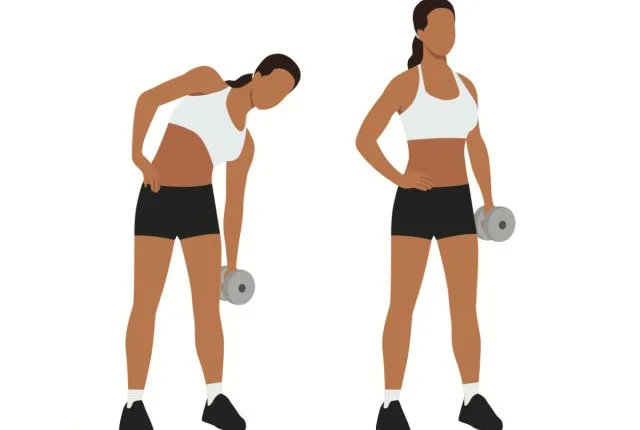There are many exercises that can help you eliminate stubborn love handles, as long as you do them correctly and with determination. But you can also take a more focused approach to your workout routine. Drawing from more than ten years of coaching experience, I will discuss seven exercises that are not very effective for targeting love handles and suggest seven alternative exercises that are much more efficient.
By adjusting traditional exercises like squats, deadlifts, rows, and core-focused movements to specifically work your obliques (or love handles), you can transform a basic movement into a targeted one. Let’s examine seven exercises that are not very effective for tackling love handles and look at alternative exercises that work the same muscle groups while concentrating on your midsection.
1. Dumbbell Side Bend
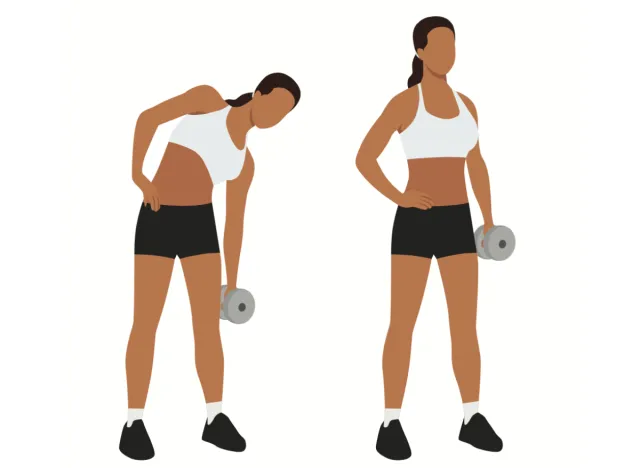
Side bends may seem too simple, resulting in passive repetitions that do not fully engage and develop your obliques. It’s better to choose a more stimulating and dynamic alternative exercise.
What To Do Instead: Weighted Side Plank with Hip Dips
The weighted side plank with hip dips is a modern spin on the classic side plank. This variation intensifies the engagement of your obliques, providing a workout that targets every angle. Experience the satisfying burn as you engage in controlled muscle contractions, effectively toning and sculpting your obliques through a complete range of motion.
Lie on your side with your bottom elbow beneath your shoulder and feet stacked. Position a kettlebell, dumbbell, or weight plate on your hip. Lift your hips off the ground, creating a straight line from head to feet. Next, lower your hips without touching the ground and return to the plank position. Repeat for a set number of reps on one side, switch to the other, and repeat. Focus on stability, exhale during the dip, and inhale when returning.
Perform three sets of 10 to 20 reps per side with 60 seconds of rest between sets.
See also Here’s What Happens When You Work Out on an Empty Stomach
2. Forearm Plank

Forearm planks are an excellent tool for learning how to activate and stabilize your core muscles. However, if you’re aiming to specifically target and engage your obliques, incorporating dynamic variations such as the rotating T plank can significantly elevate the challenge and effectiveness of your workout routine.
What To Do Instead: Rotating T-Plank
Executing the rotating T plank demands considerable dynamic effort to stabilize your shoulders, engage your core, and perform smooth rotations between positions. This movement engages your core and challenges your lateral stability. As you rotate, your obliques and transverse abdominals come into play, benefiting from the combination of rotational motion and lateral stability. To enhance oblique activation, I often cue my clients to “push the top hip toward the ceiling,” encouraging optimal engagement during the exercise.
To perform a rotating T plank, start in a forearm plank position and rotate your body to the right. As you rotate, open your chest and extend your right arm toward the ceiling while keeping your hips lifted off the floor and core engaged. Pause briefly before returning to the starting position and repeating on the opposite side. Alternate sides to effectively engage both obliques.
Complete three sets of five to eight reps per side. Rest for 60 seconds between sets.
3. Back Squat
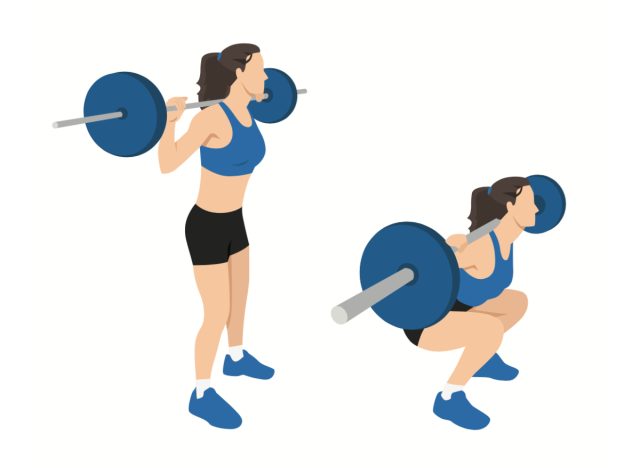
While the back squat is unparalleled for developing lower-body strength and size, it may not be ideal for targeting love handles. Transitioning to a front squat can significantly enhance core engagement, thereby intensifying its ability to effectively sculpt your midsection.
What To Do Instead: Front Squat
Harnessing the front rack position is a powerful way to engage your abdominal muscles. If you need help with the mobility to hold a barbell in this position or feel unsure about stepping under it, consider kettlebell or dumbbell front squats as alternatives. They offer comparable effectiveness while being more accessible for beginners.
To perform a front squat, set up a barbell in a squat rack at chest height and position yourself under it with feet shoulder-width apart. Grab the barbell outside shoulder-width with a palms-down grip and swing your elbows forward to create a front rack position. Lift the bar off the rack, stepping back to clear it, and set your feet slightly wider than shoulder-width apart. Descend into a squat by pushing your hips back and bending your knees until your thighs are parallel or slightly below, ensuring knees track over toes. Drive through your heels to return to the starting position, maintaining core engagement and upright posture.
See also The 10 Best Exercises to Target Cellulite-Prone Areas
Perform three sets of eight to 12 reps. Rest for 90 seconds between sets.
4. Kettlebell Deadlift
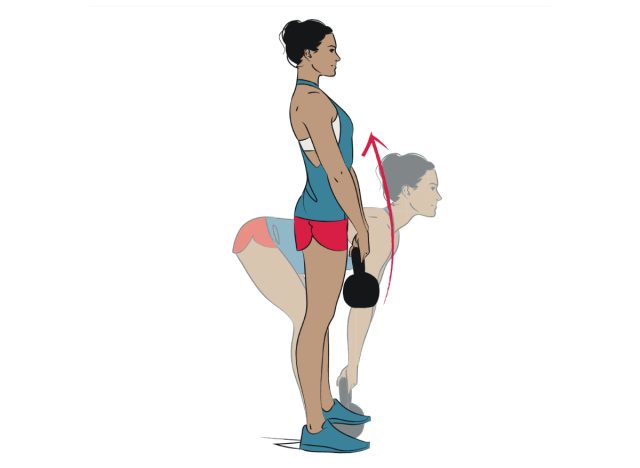
The kettlebell deadlift is a beloved progression for novices who want to build posterior strength on their journey to repping out sets of barbell deadlifts. However, try the suitcase variation if you want those love handles gone!
What To Do Instead: Suitcase Deadlift
The suitcase deadlift introduces a stability element not found in the traditional kettlebell deadlift. Asymmetrically loading your body requires increased core stabilization, especially targeting the obliques, to resist side-to-side bending of the spine, known as anti-flexion.
Start with your feet shoulder-width apart and a kettlebell beside one foot. Maintain a neutral spine as you grip the kettlebell handle with one hand and bend at the hips and knees to lift it off the ground. Drive through your heels to stand up straight, keeping the kettlebell close to your body. Pause briefly at the top, then lower the kettlebell with control. Repeat for the desired reps on each side, focusing on core engagement and proper form.
Complete three sets of eight to 15 reps per side with 60 seconds of rest between sets.
5. Barbell Row
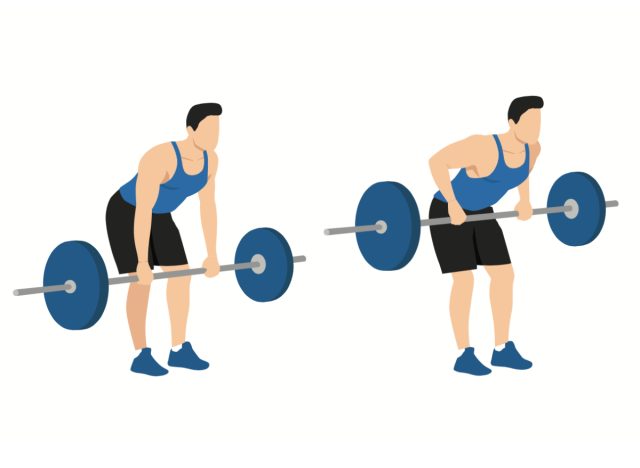
The barbell row is phenomenal for building strength and size in your back, but it might not be the best option for engaging your core in rows.
What To Do Instead: Renegade Row
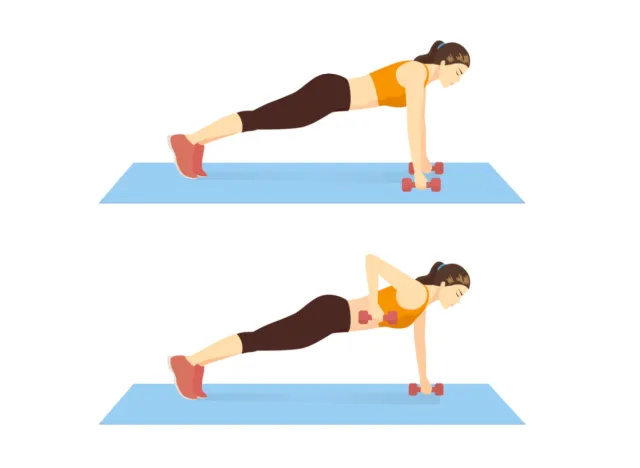
Renegade rows excel at chiseling a six-pack by prioritizing core stabilization and anti-rotation training. Engaging in rows from a plank position activates core muscles like the rectus abdominis and obliques to uphold stability. This compound exercise targets the back, shoulders, and arms and intensifies core involvement, fostering greater abdominal strength and a sculpted midsection.
Start in a plank position with your hands under your shoulders, gripping dumbbells. Lift one hand, pulling your elbow to the ceiling in a strong rowing motion while balancing on the other arm. Alternate sides, maintaining stability and squeezing your core. Make sure to use non-rounded dumbbells for a stable surface.
Perform three sets of 12 to 15 reps per side with 60 seconds of rest between sets.
See also 5 Strength Workouts To Maintain a Lean Body as You Age
6. Seated Shoulder Press
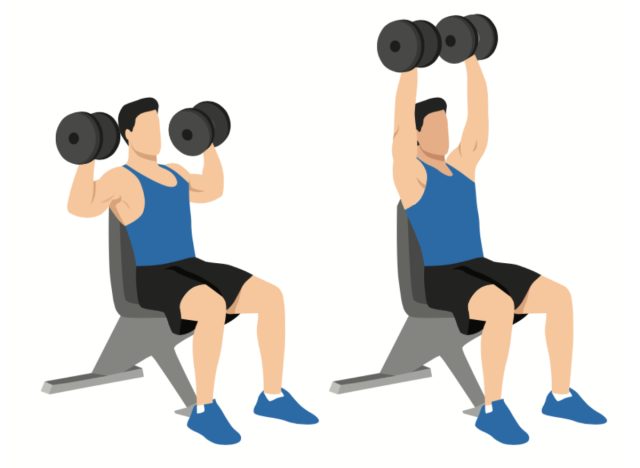
The seated shoulder press builds strength and size in the shoulders, but the seated position takes away most of your core engagement, making it highly unlikely to target your obliques.
What To Do Instead: Tall-kneeling Shoulder Press
The tall-kneeling shoulder press is the premier alternative for honing your obliques while enhancing upper-body pressing strength. This position demands shoulder stability and challenges your core to maintain proper alignment, which is crucial for optimal performance. By focusing on keeping your ribs stacked over your hips, the tall-kneeling stance effectively engages and strengthens the obliques, contributing to a well-rounded core and overall strength development.
Start by positioning your knees directly under your hips on a padded surface to perform a tall kneeling shoulder press. Keep your toes on the ground and engage your core to maintain a neutral spine. Hold a dumbbell in each hand at shoulder height, with your palms facing each other and elbows close to your body. As you exhale, press the dumbbells overhead by straightening your arms, ensuring your core stabilizes your body. Pause briefly at the top with your arms extended before inhaling and lowering the dumbbells to shoulder height.
Complete three sets of eight to 15 reps. Rest for 90 seconds between sets.
7. Kettlebell Swing
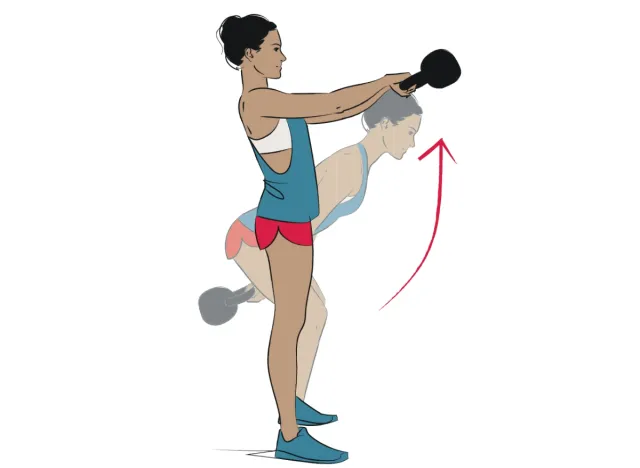
The kettlebell swing will develop explosive power and strength for your posterior chain. Switching to a rotational variation will shift the core focus from your sick pack abs to a comprehensive engagement of your obliques, transverse abdominals, and rectus abdominals.
What To Do Instead: Rotational Kettlebell Swing
Rotational kettlebell swings activate your core and cultivate explosive power and strength in your posterior chain. By combining the benefits of traditional kettlebell swings with the importance of rotational movement, this exercise introduces a refreshing and dynamic element to your workouts.
Start with your feet shoulder-width apart and hinge at the hips to grab the kettlebell by the handle (horn), maintaining a slight bend in your knees. As the bell is centered and your arms are fully extended, engage your hips to rotate your torso to one side, simultaneously swinging the kettlebell above your head using the generated momentum. You may pivot on the trailing leg, but ensure it remains grounded throughout the movement to maintain stability.
Perform three sets of 10 to 20 swings per side. Rest for 60 to 90 seconds between sets.
Frequently Asked Questions (FAQs)
What are love handles?
Love handles are excess fat deposits that accumulate around the hips and waist, giving the appearance of extra flab along the sides of the torso.
Why are certain exercises listed as least effective for love handles?
Some exercises may not directly target the love handle area or may not be as efficient at burning fat in that specific area compared to other exercises. It’s important to focus on exercises that engage the core and promote overall fat loss for optimal results.
What makes an exercise effective for reducing love handles?
Effective exercises for love handles involve dynamic movements that engage the core, promote fat burning, and help tone the abdominal and oblique muscles. These exercises should also focus on increasing overall muscle mass and boosting metabolism.
What are the disadvantages of these least effective exercises?
These least effective exercises may not produce the desired results in terms of reducing love handles. They might not provide enough resistance or engage the core muscles sufficiently to elicit significant changes in body composition.
How can I incorporate the alternative exercises into my workout routine?
You can incorporate the alternative exercises by replacing the least effective exercises in your routine with the more targeted and effective alternatives. It’s recommended to perform a variety of exercises that target different muscle groups to achieve balanced fitness and overall strength.
Can spot reduction target love handles specifically?
Spot reduction is a common misconception that refers to the belief that you can lose fat in a specific area of the body by targeting that area with exercises. However, spot reduction is not an effective method for reducing love handles. To reduce love handles, it’s important to focus on overall fat loss through a combination of proper nutrition, cardiovascular exercise, and targeted strength training.
How long does it take to see results from these exercises?
The timeline for seeing results from exercises targeting love handles can vary depending on various factors such as diet, consistency, intensity of workouts, and individual body composition. With a well-rounded fitness routine that includes a mix of cardio, strength training, and a healthy diet, you can start seeing improvements in a few weeks to a couple of months.

